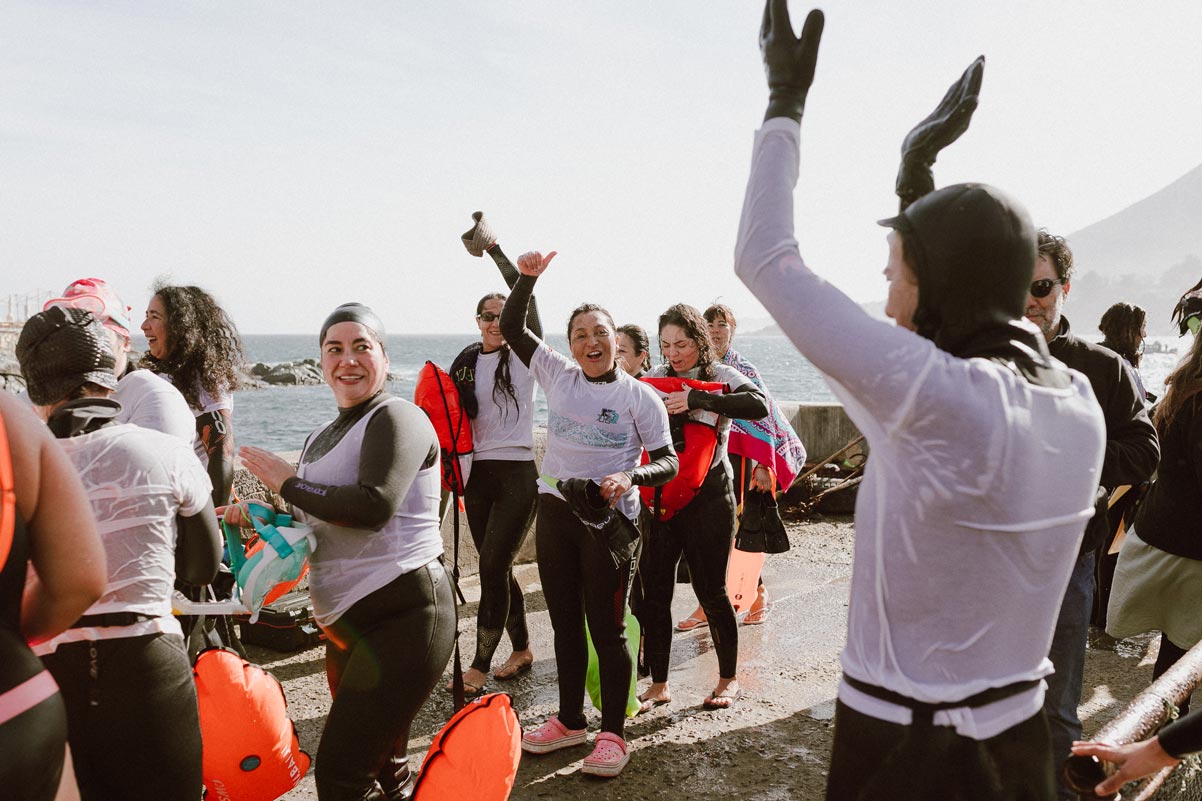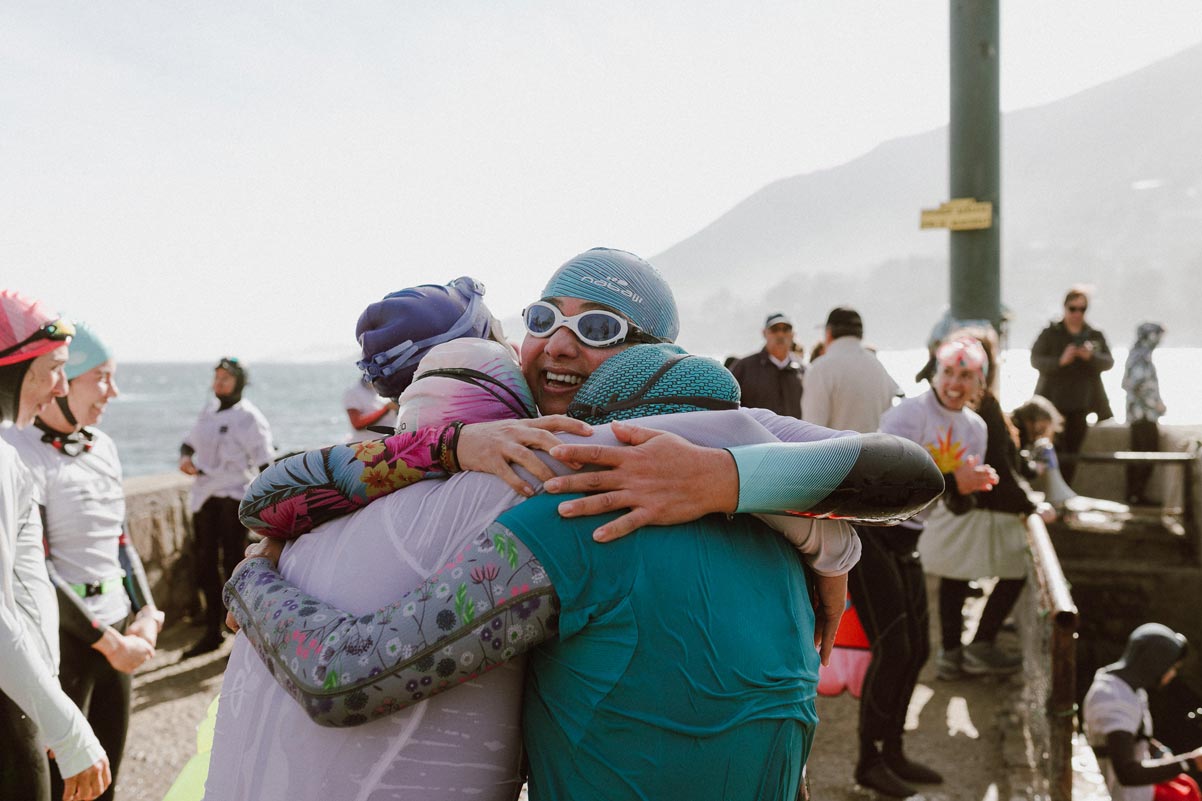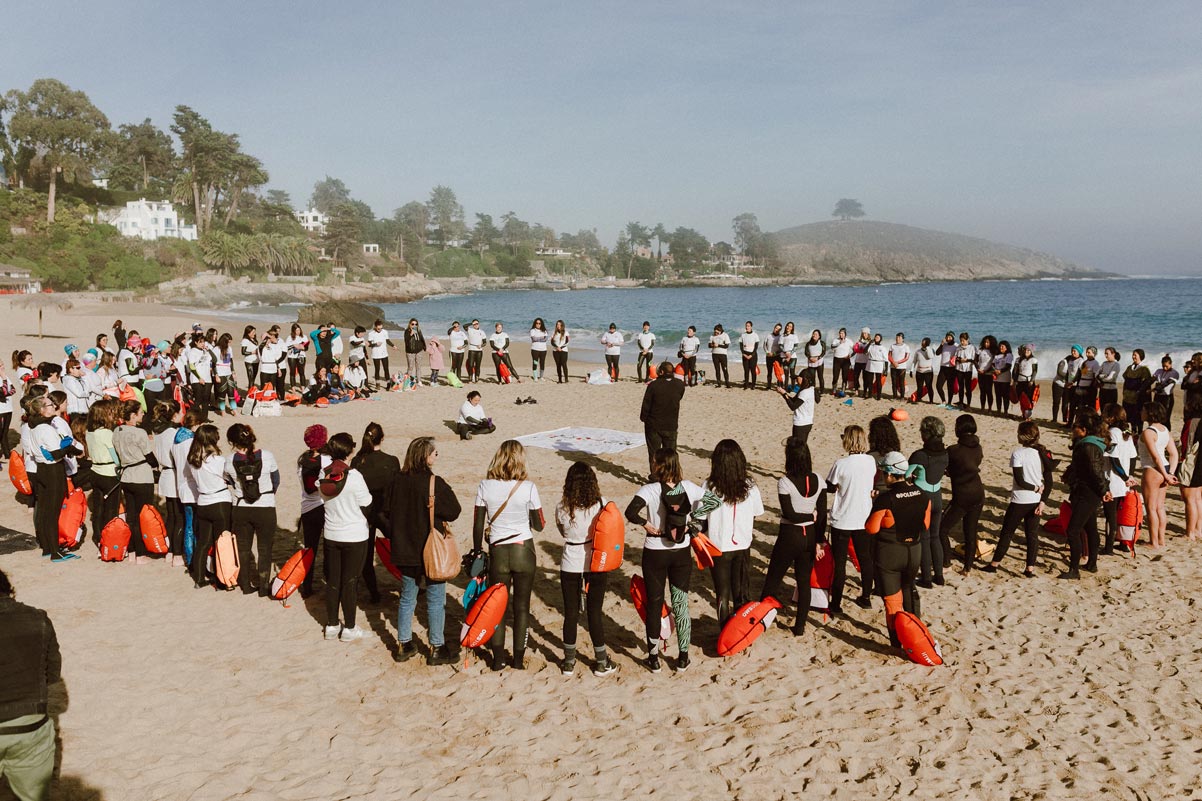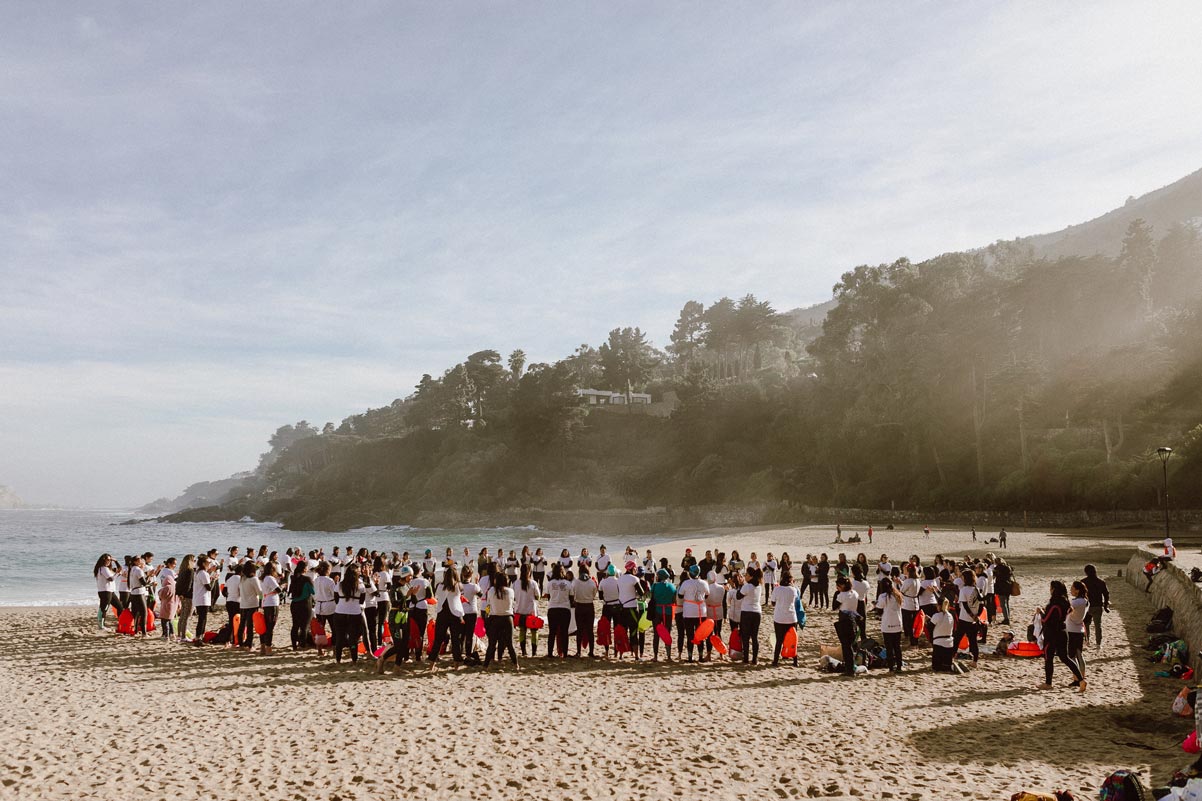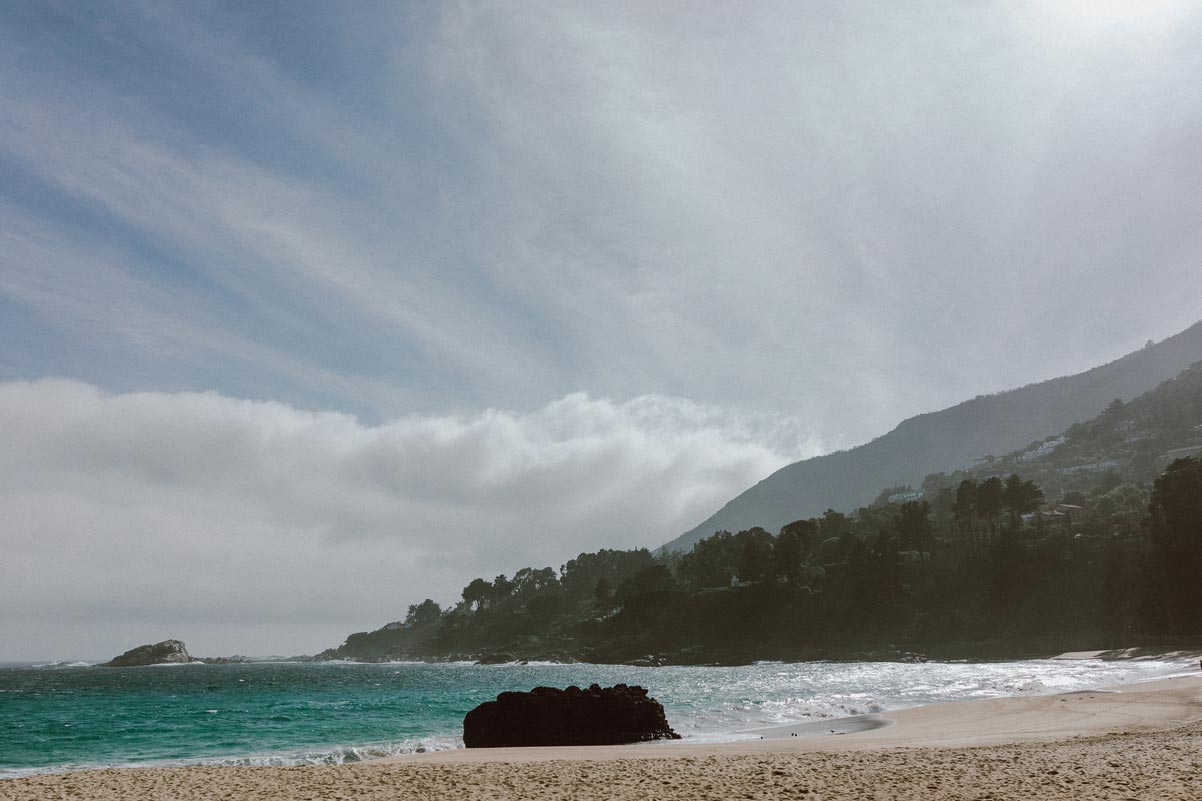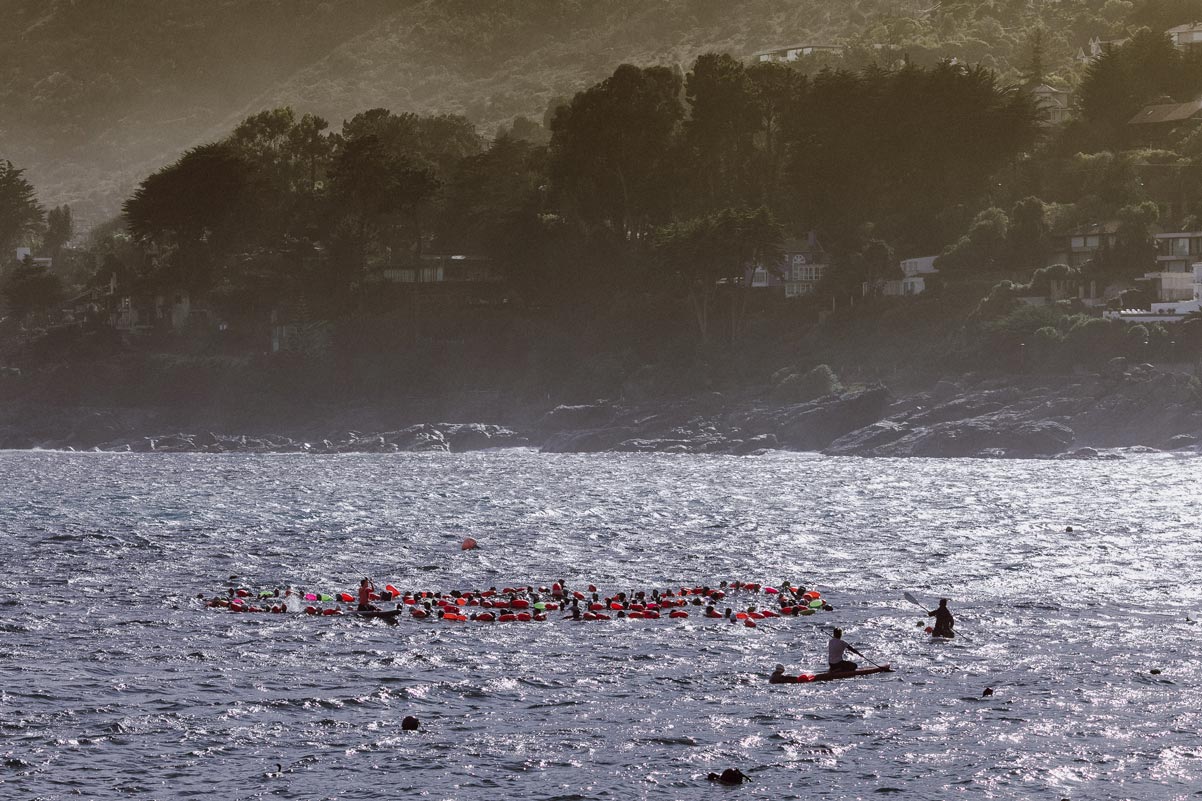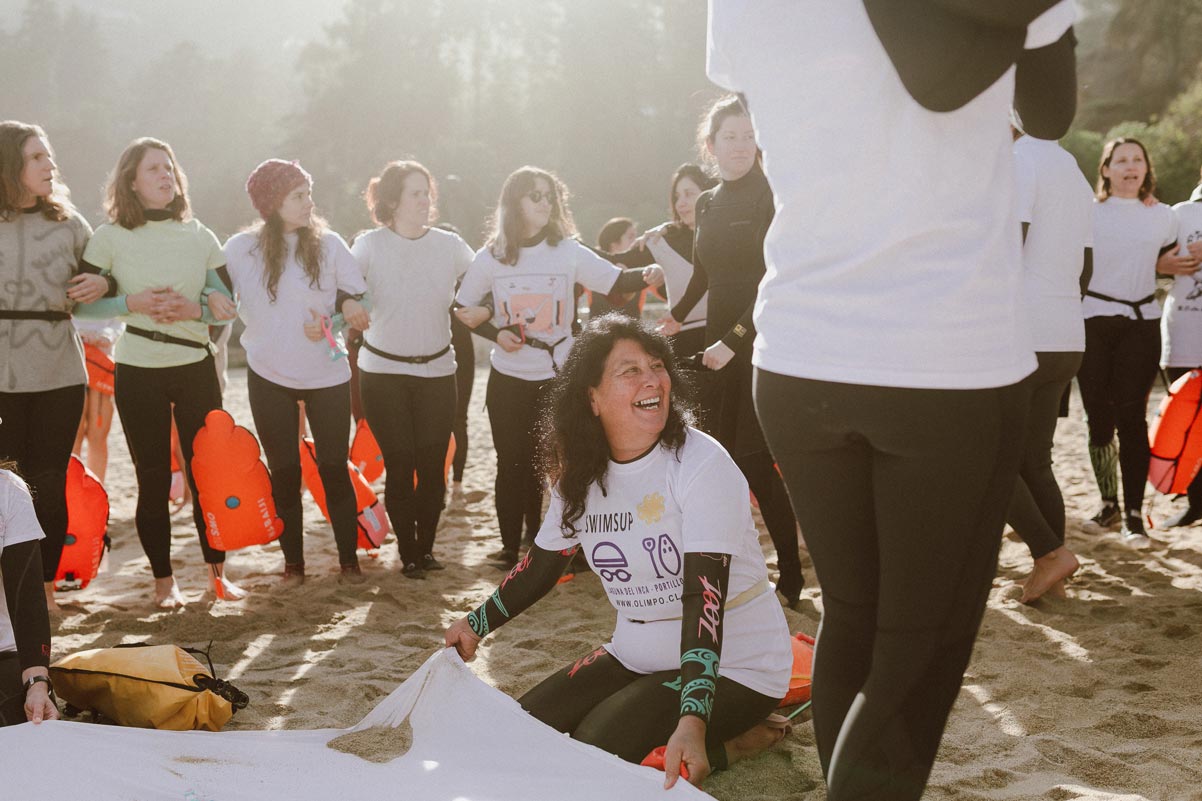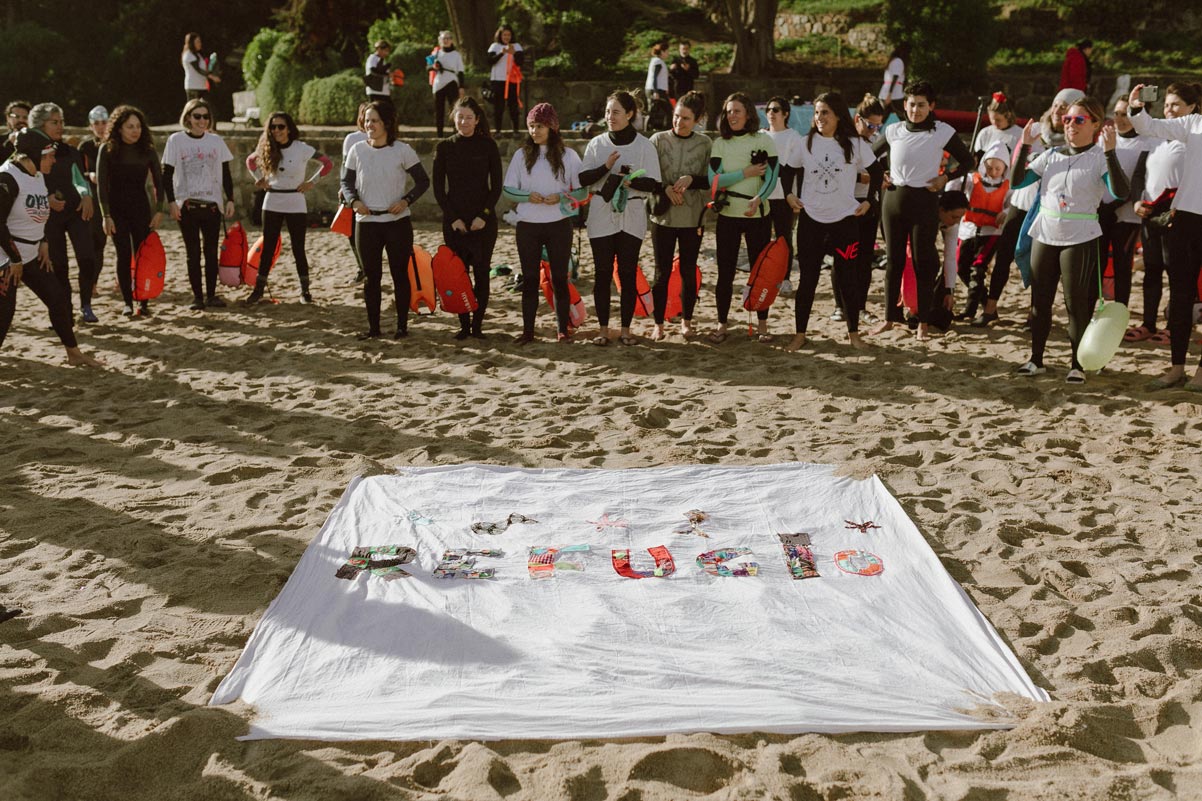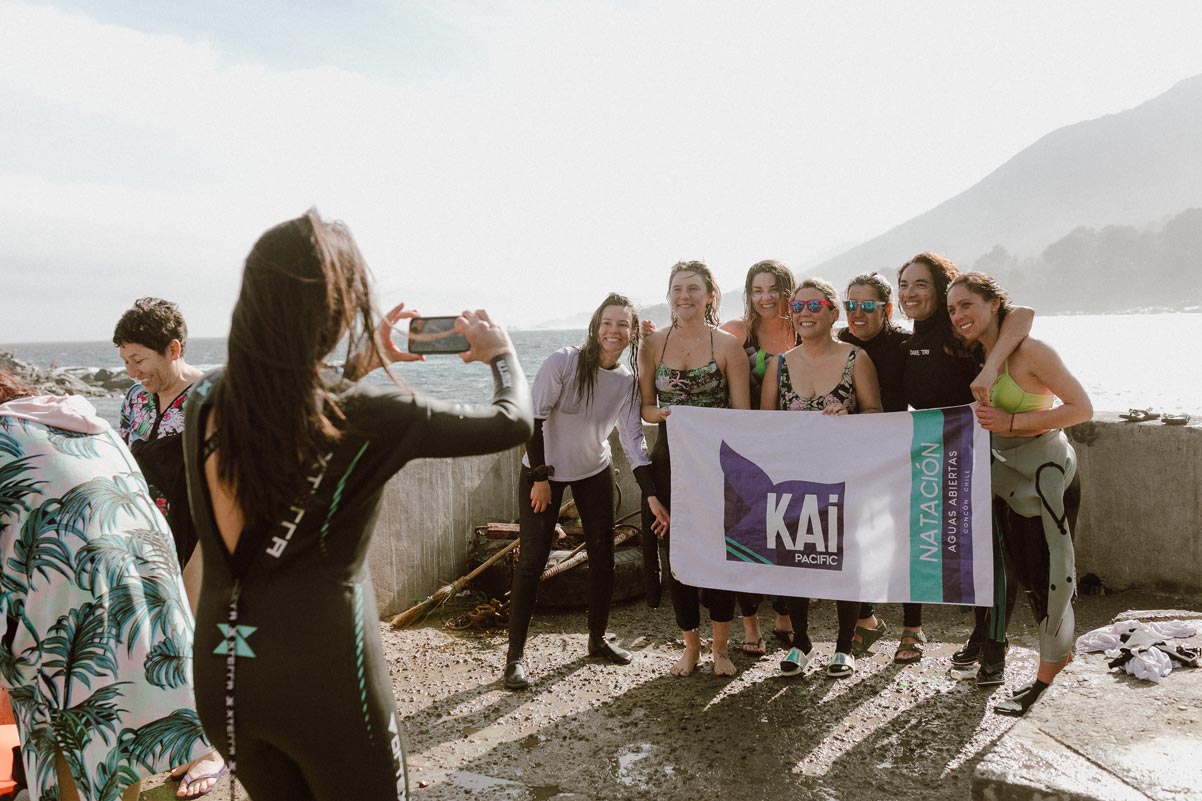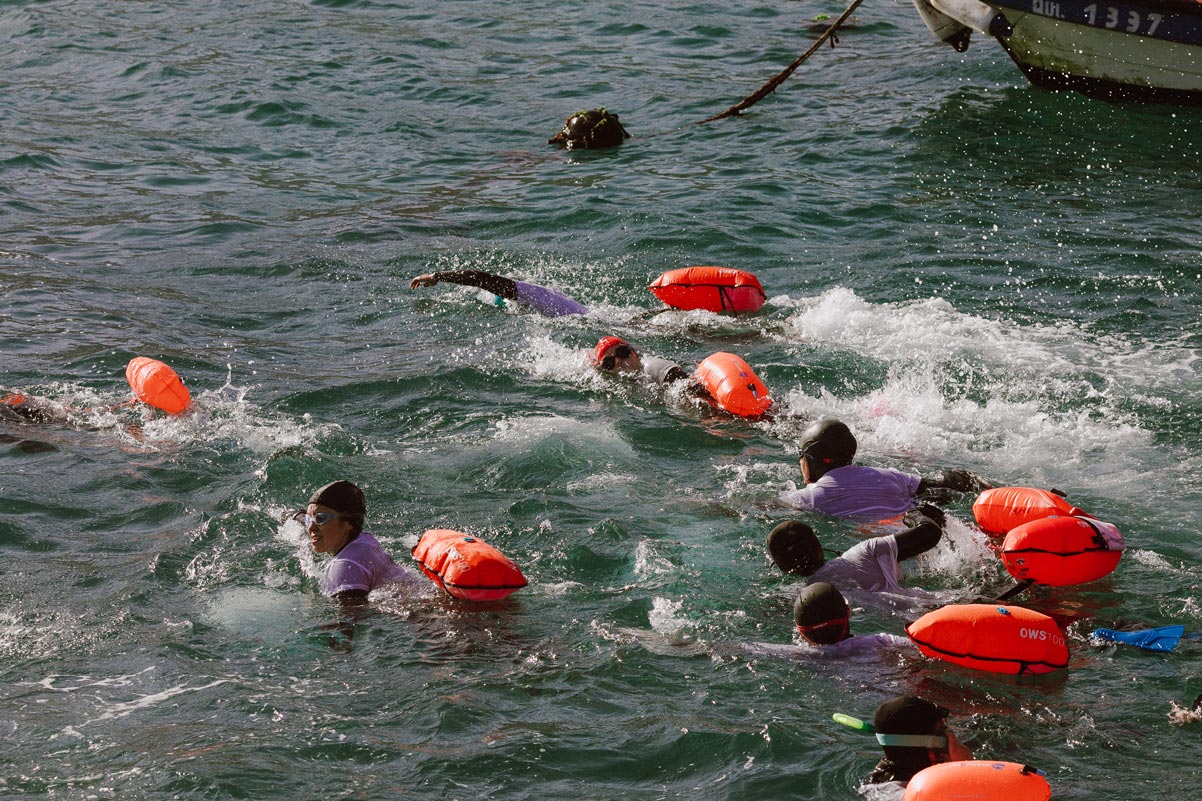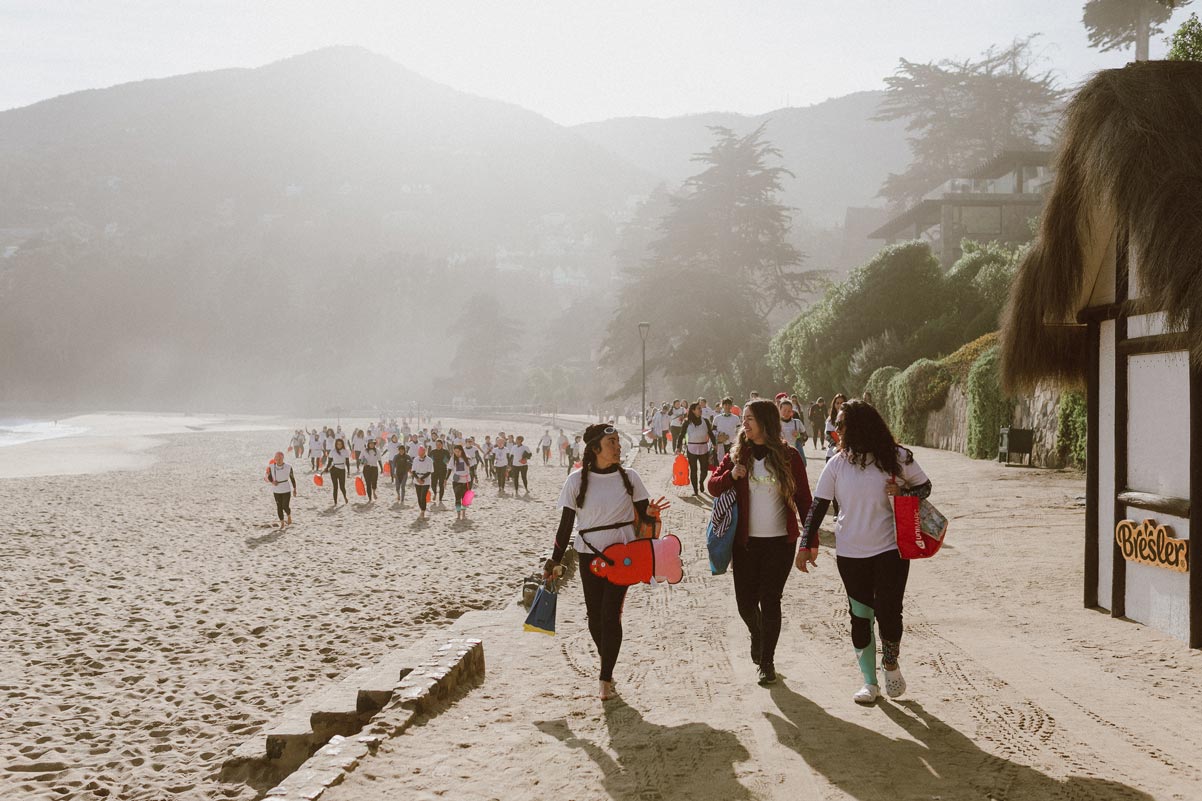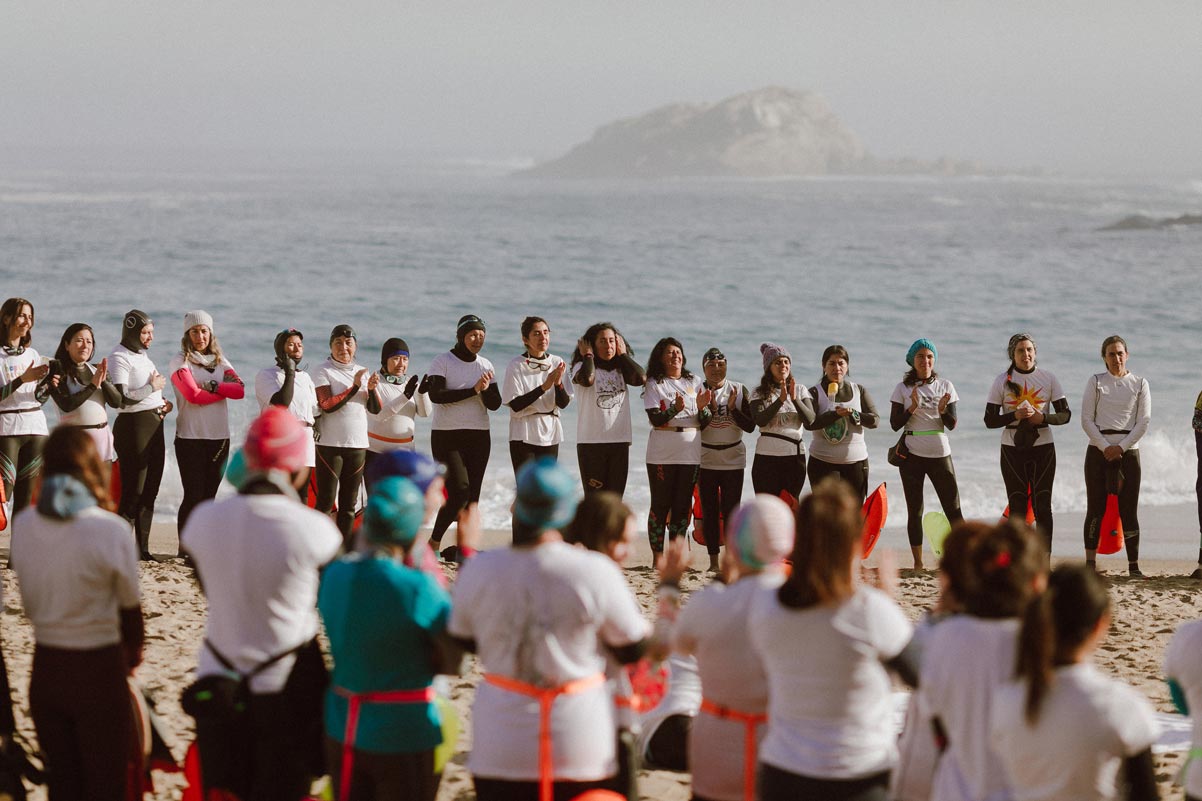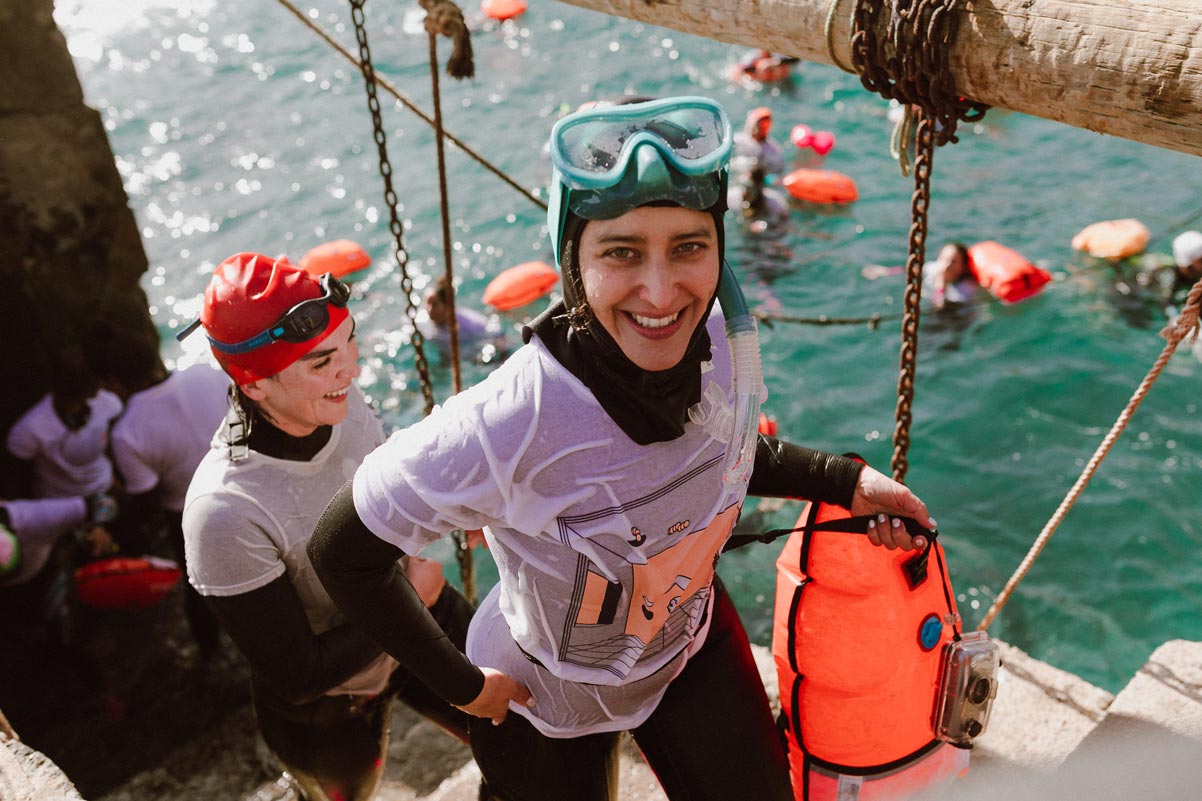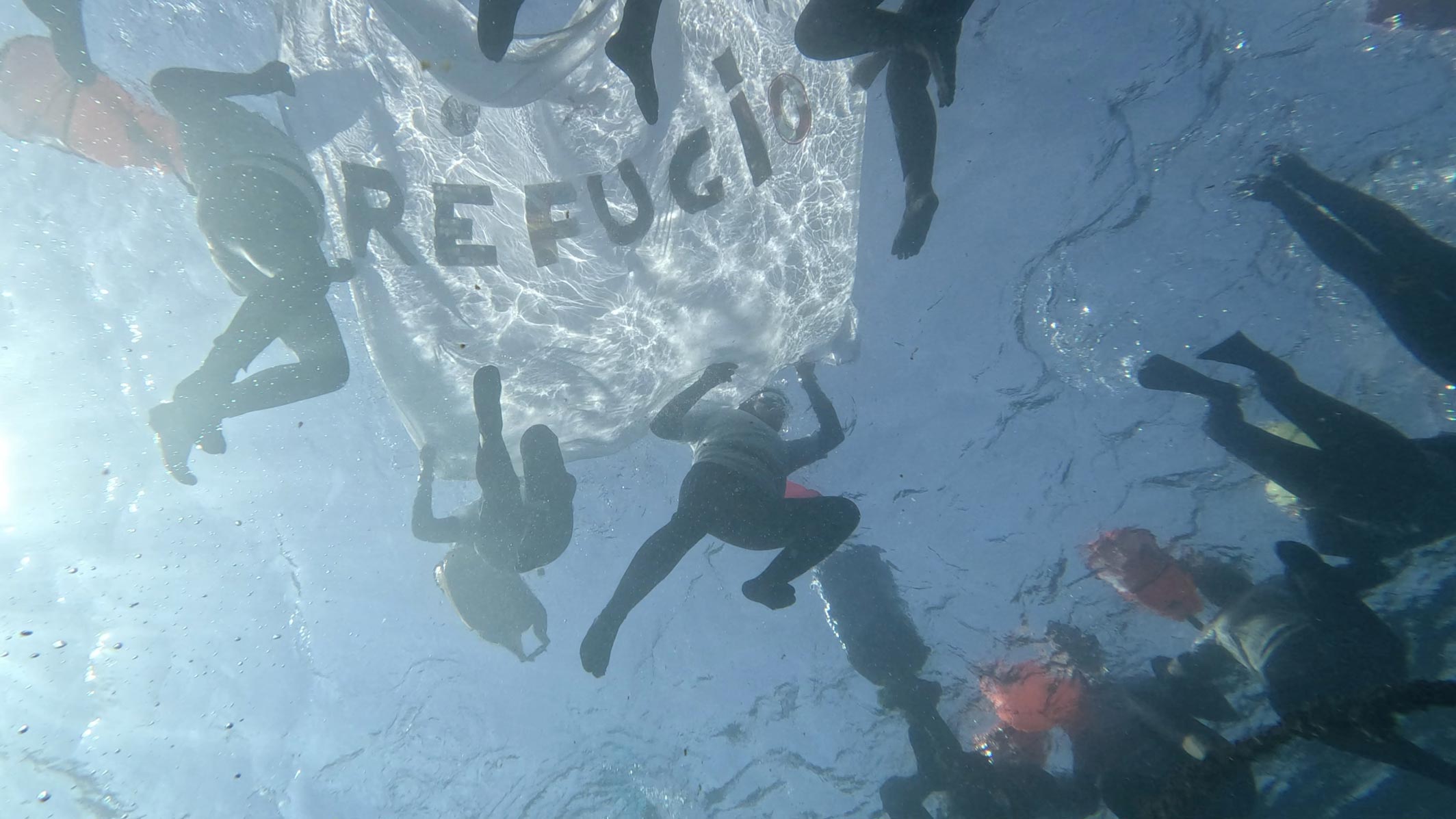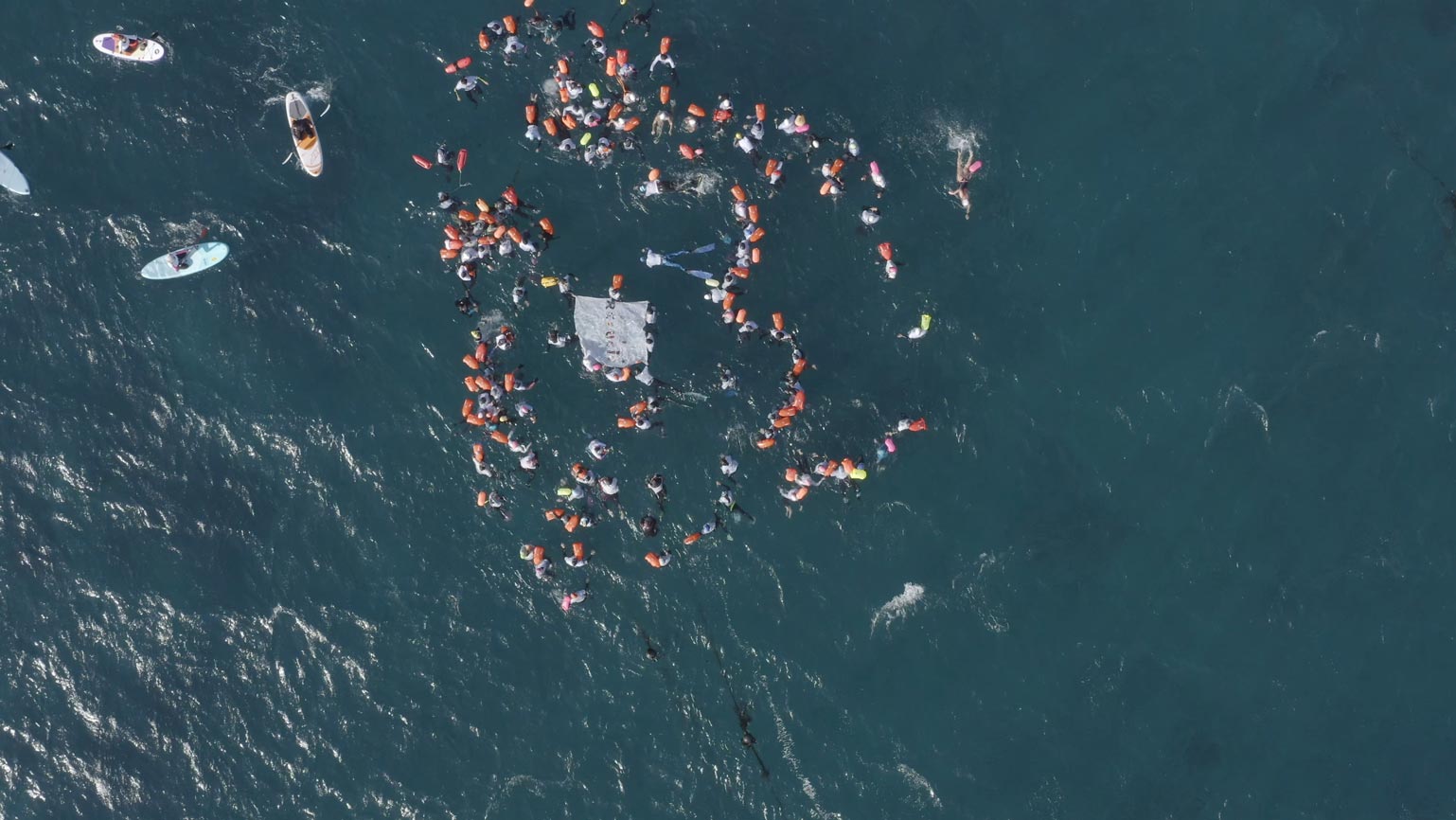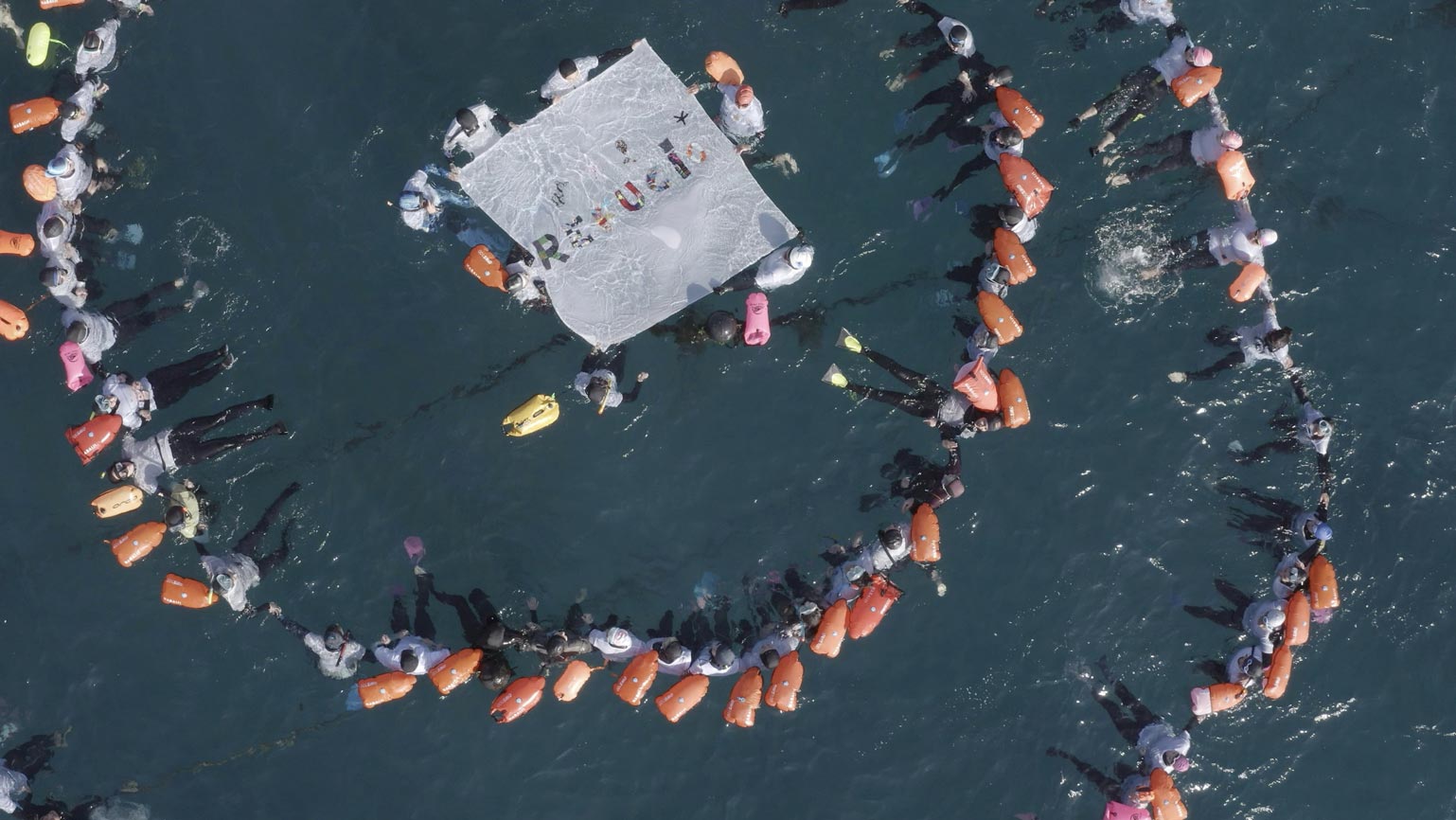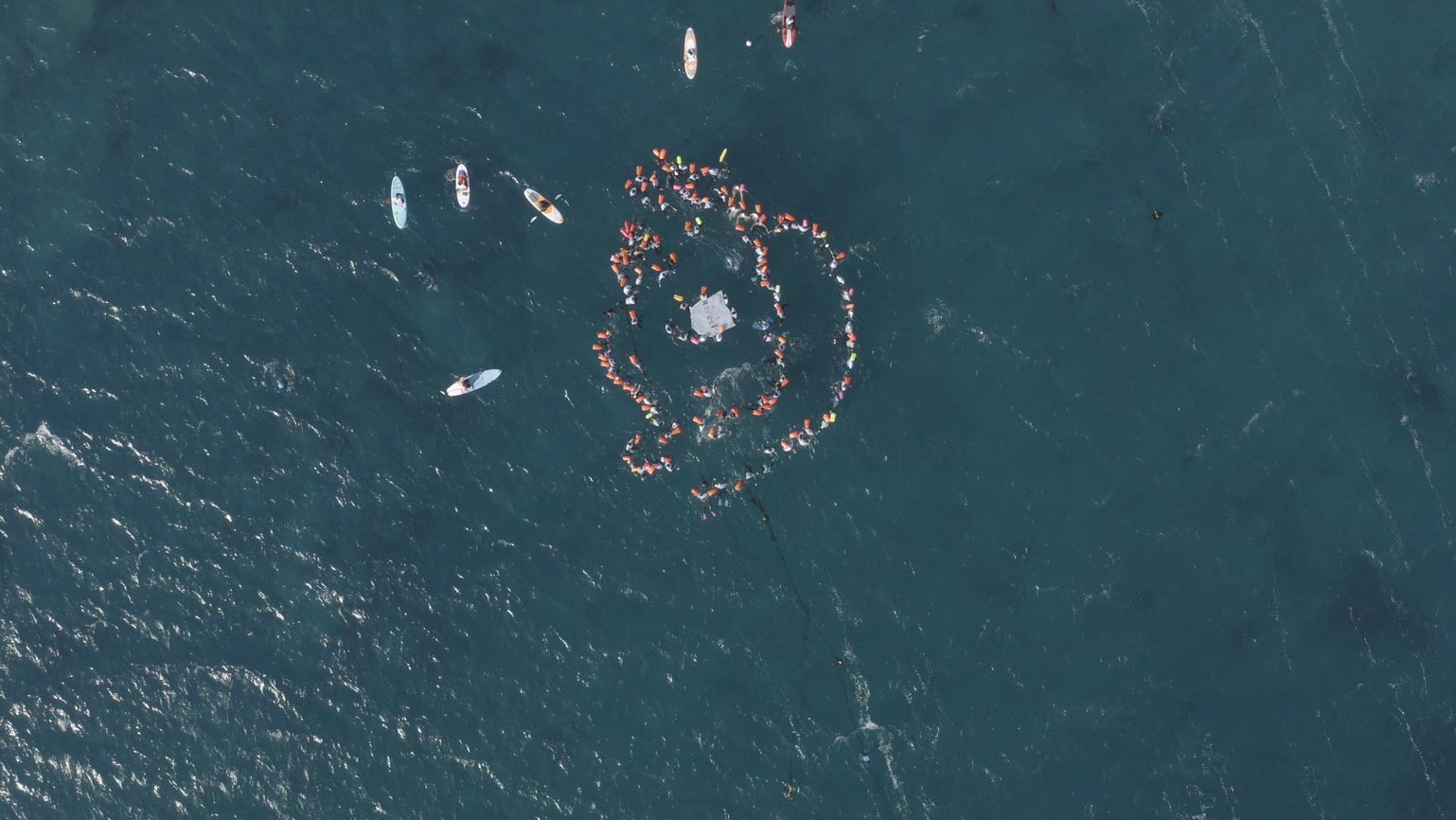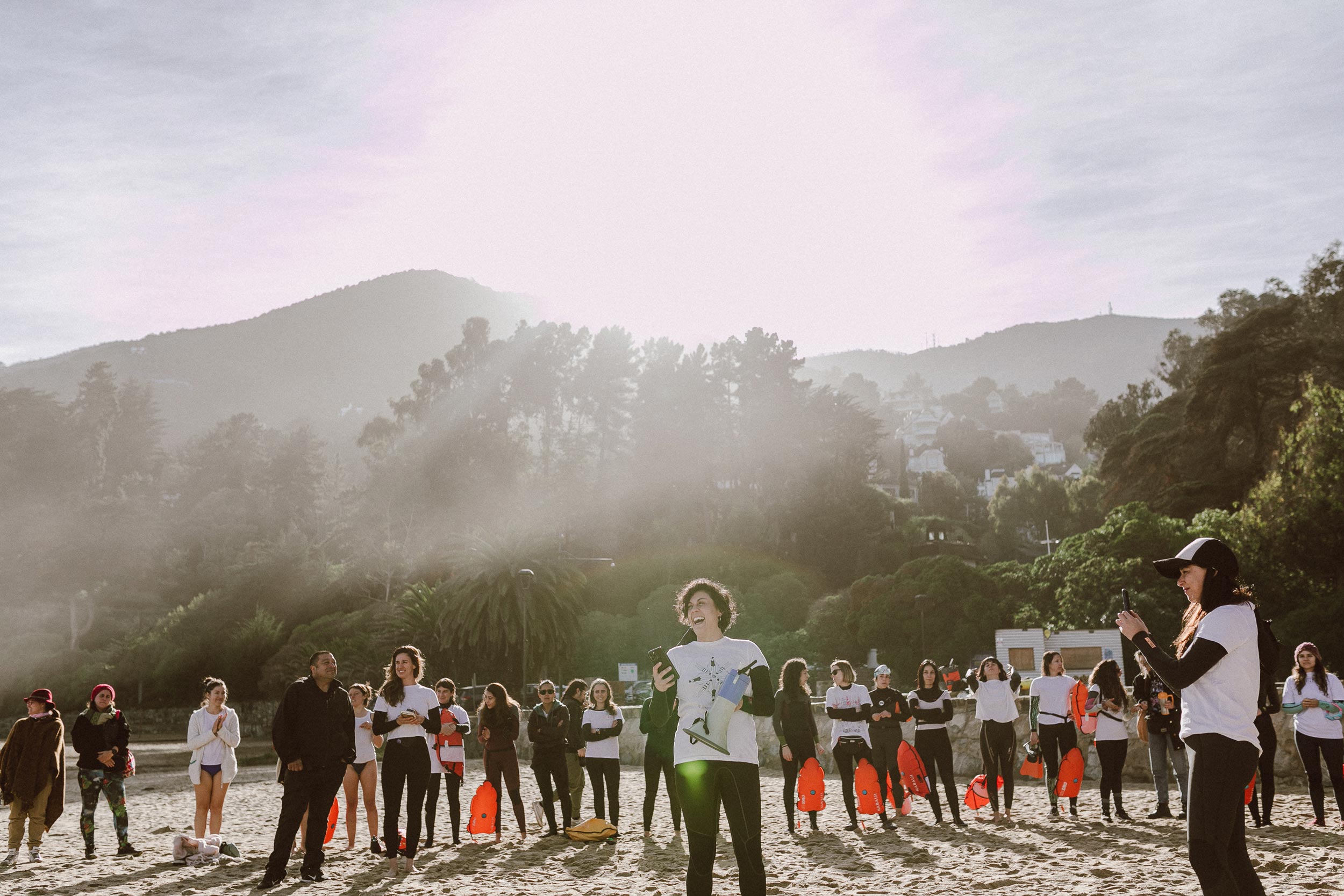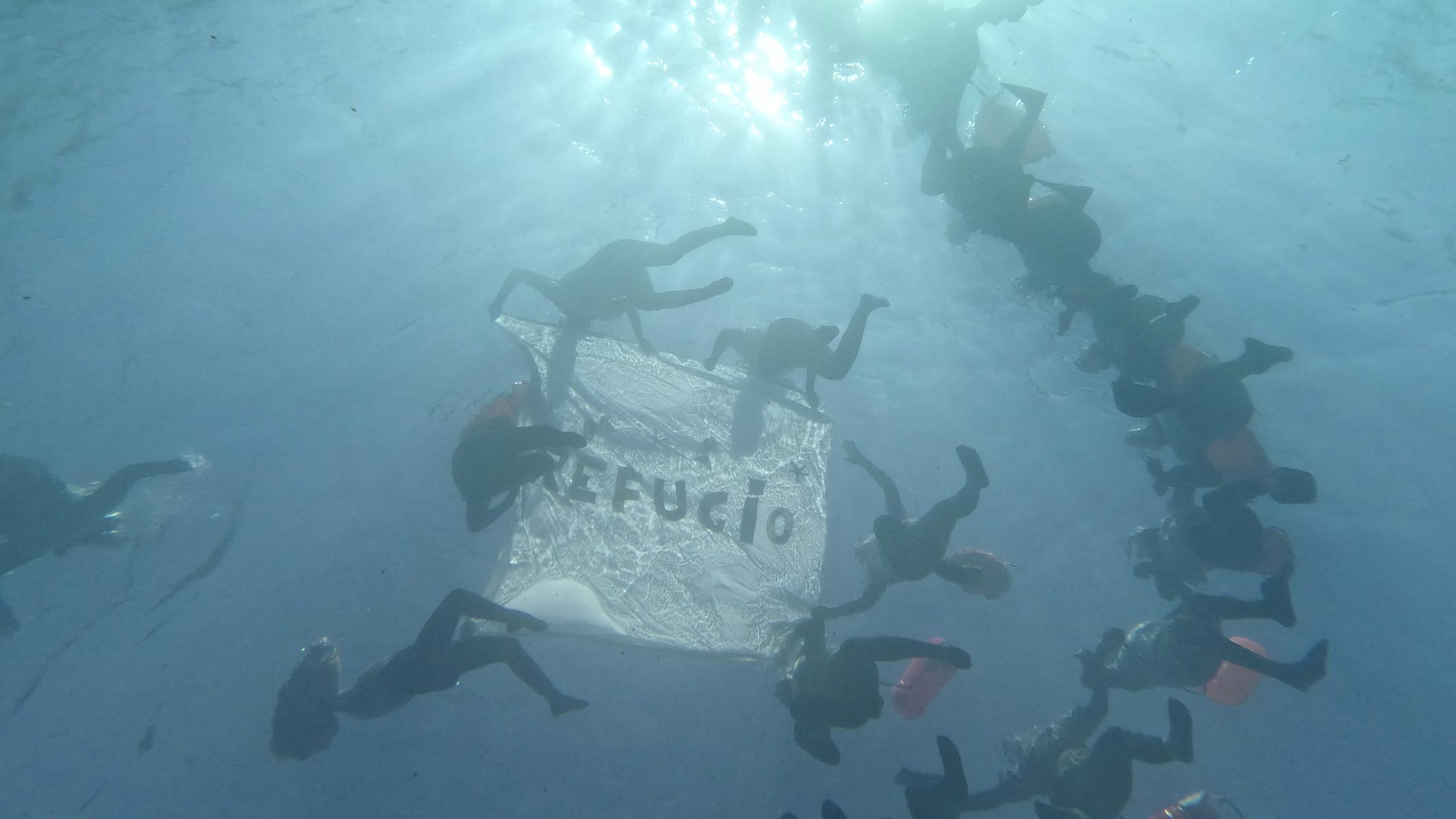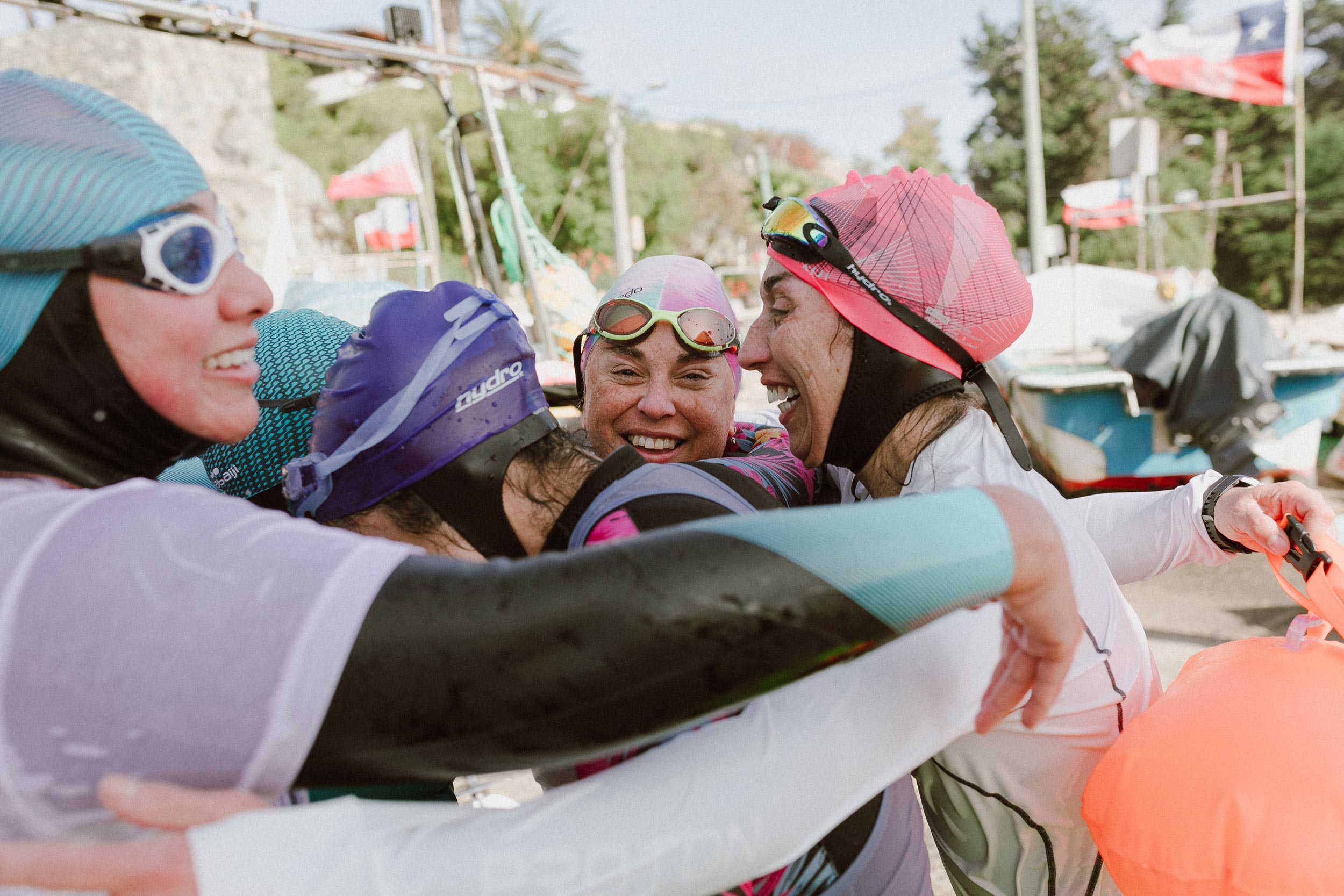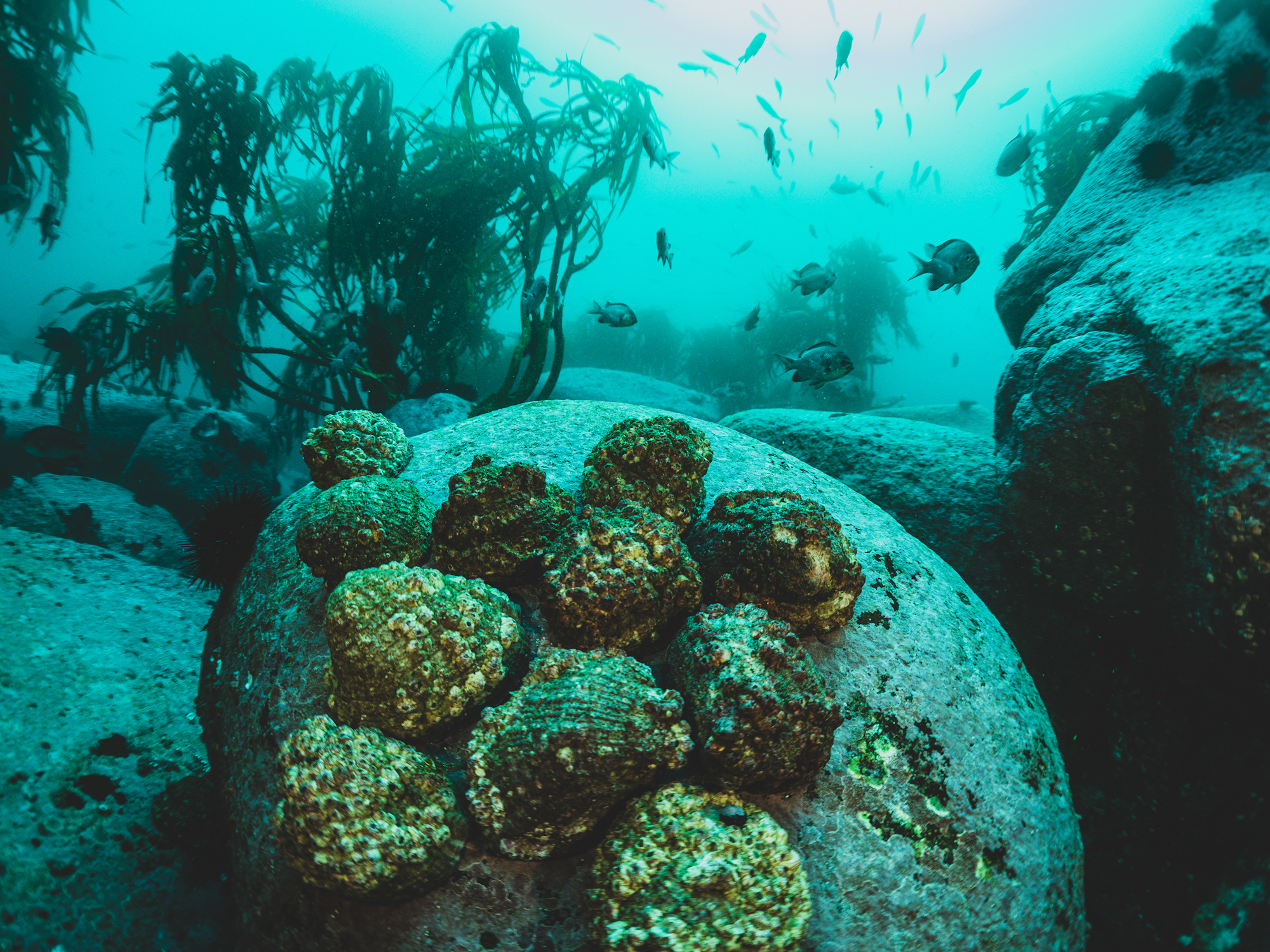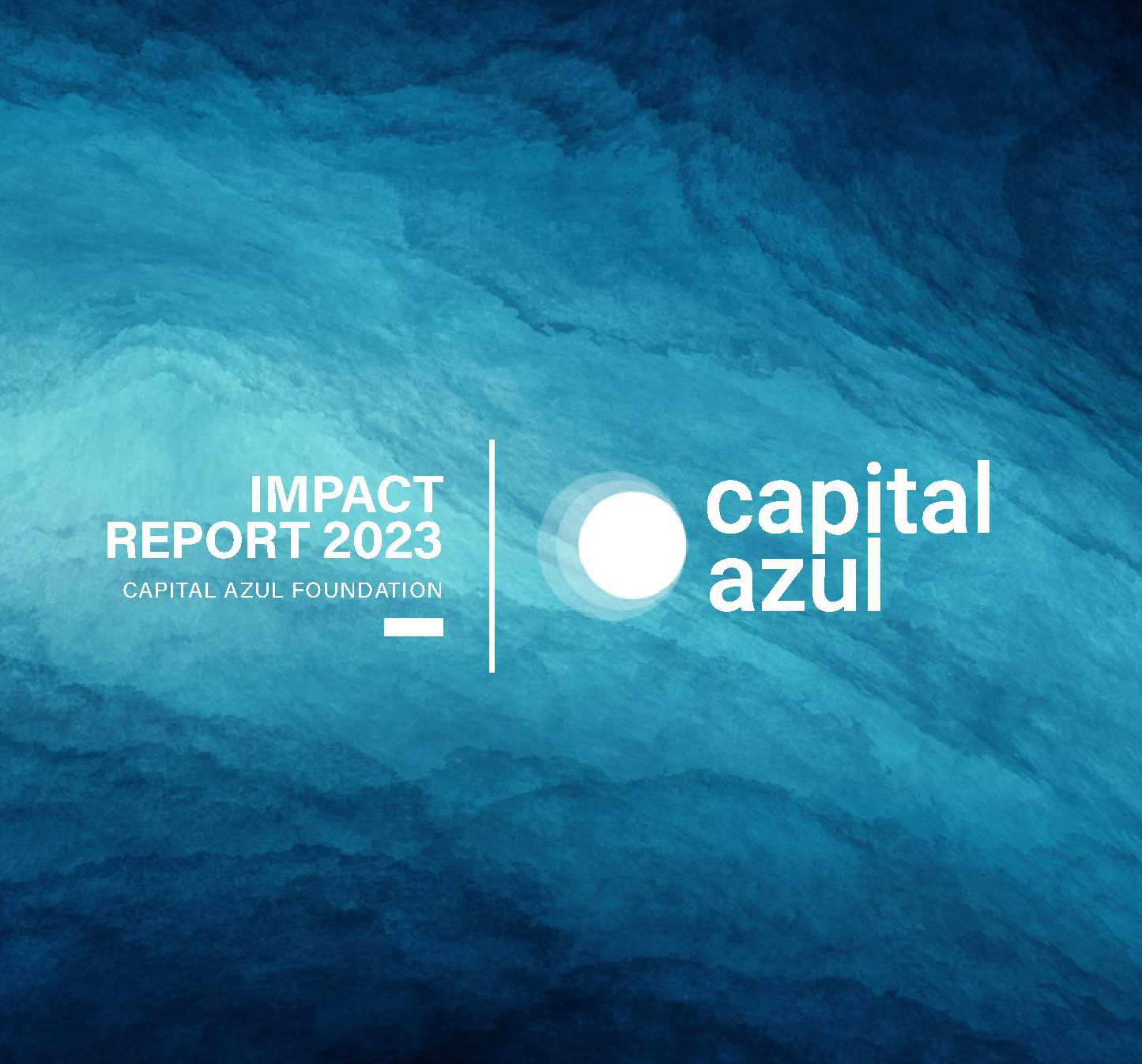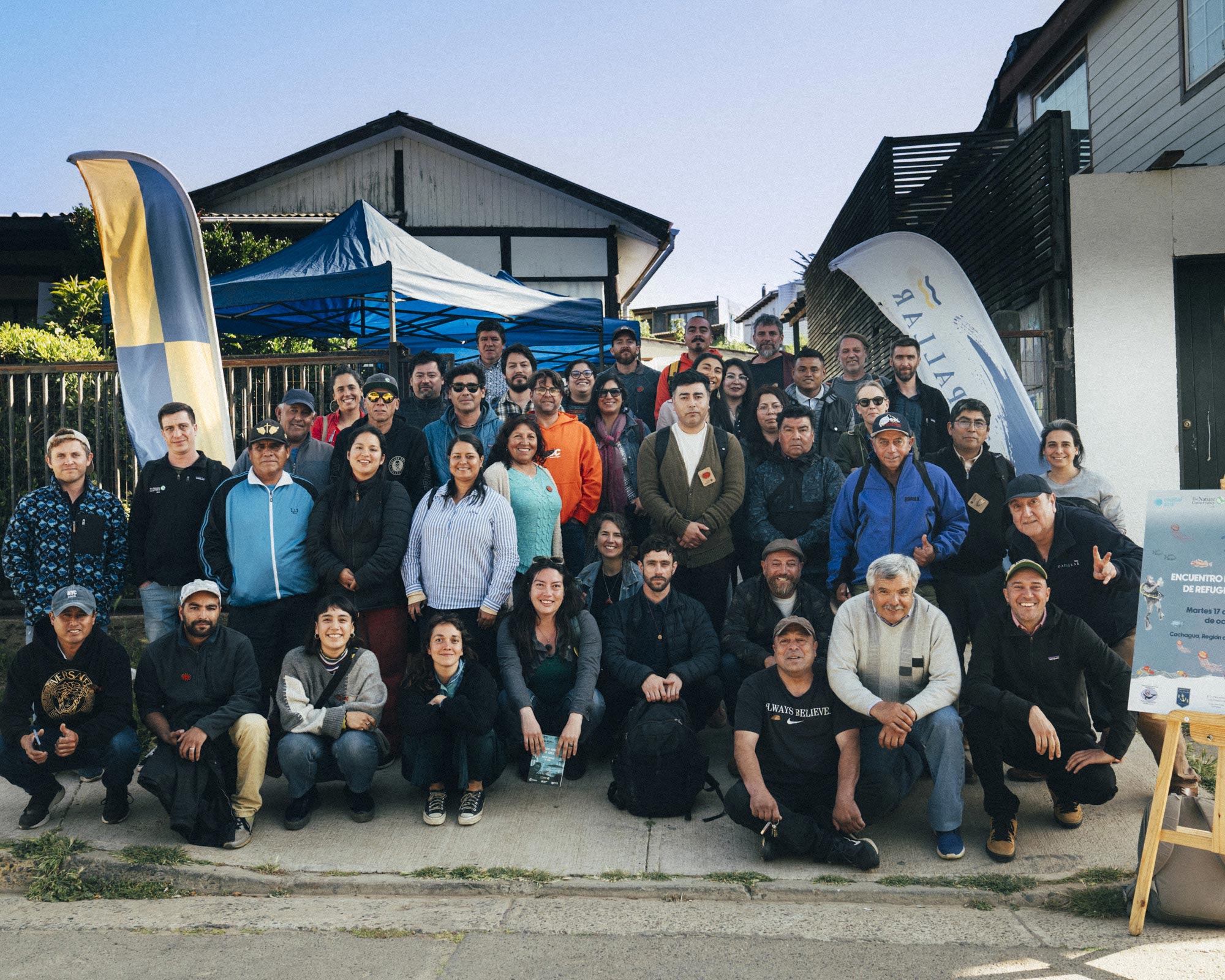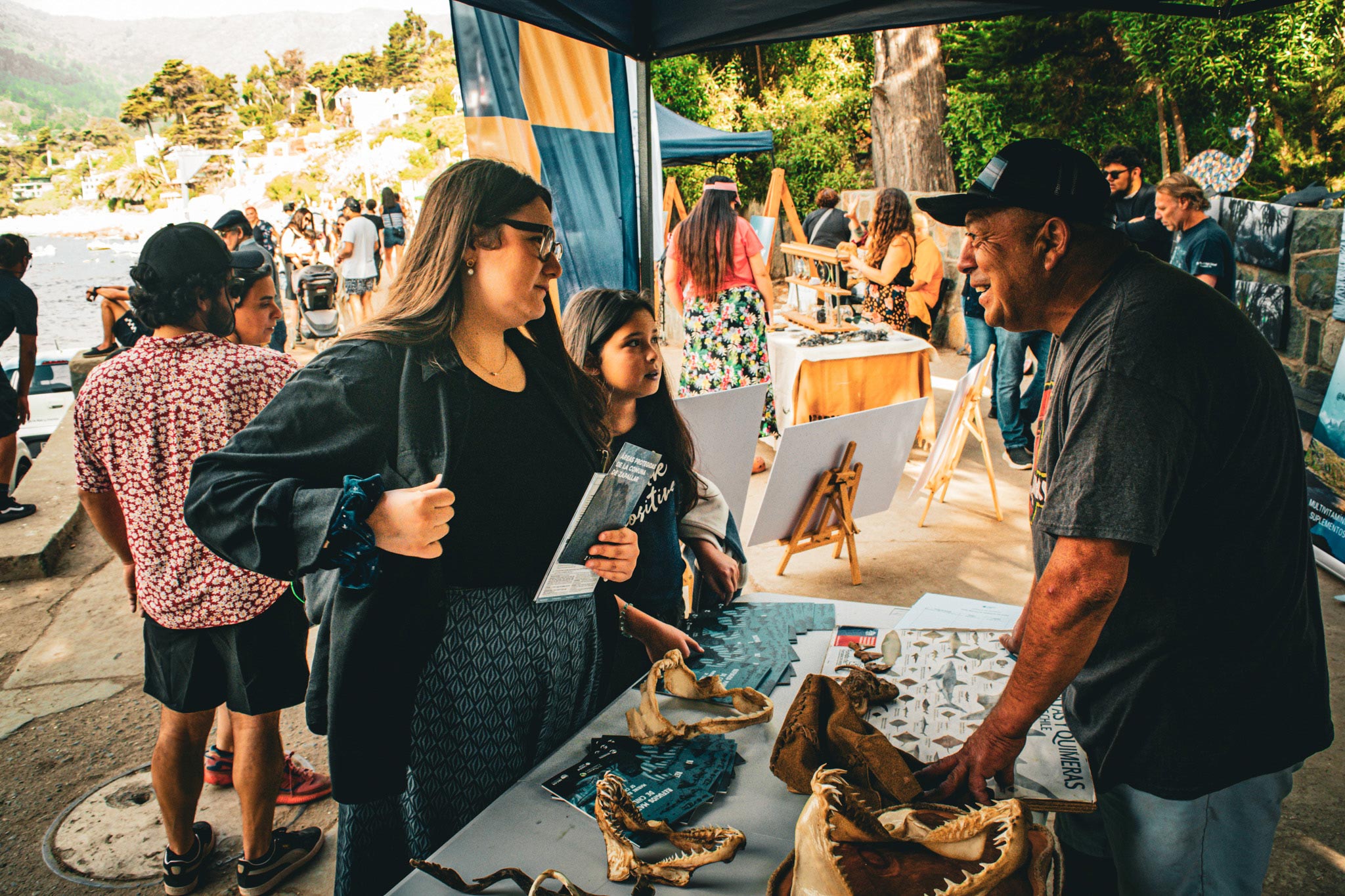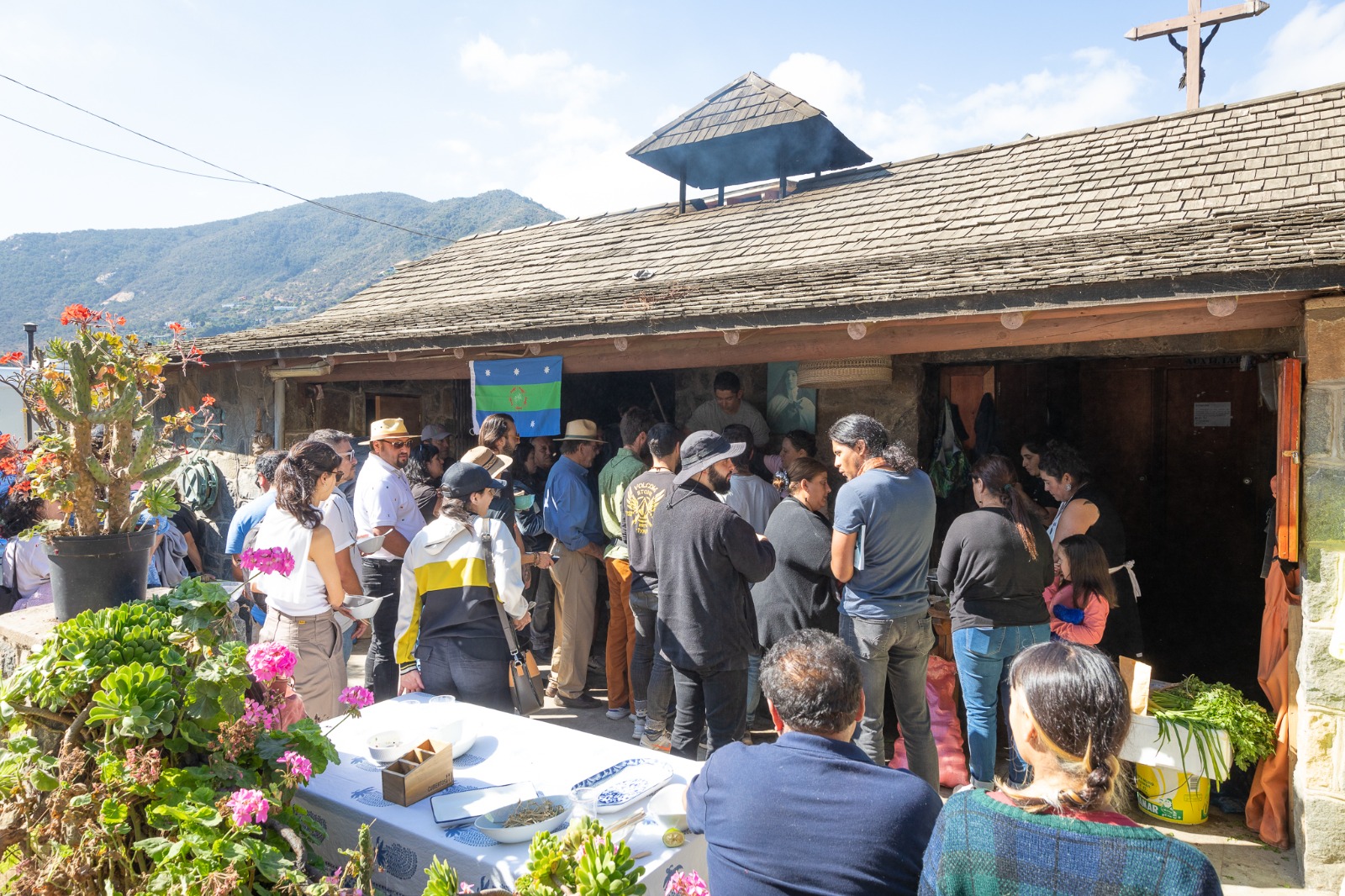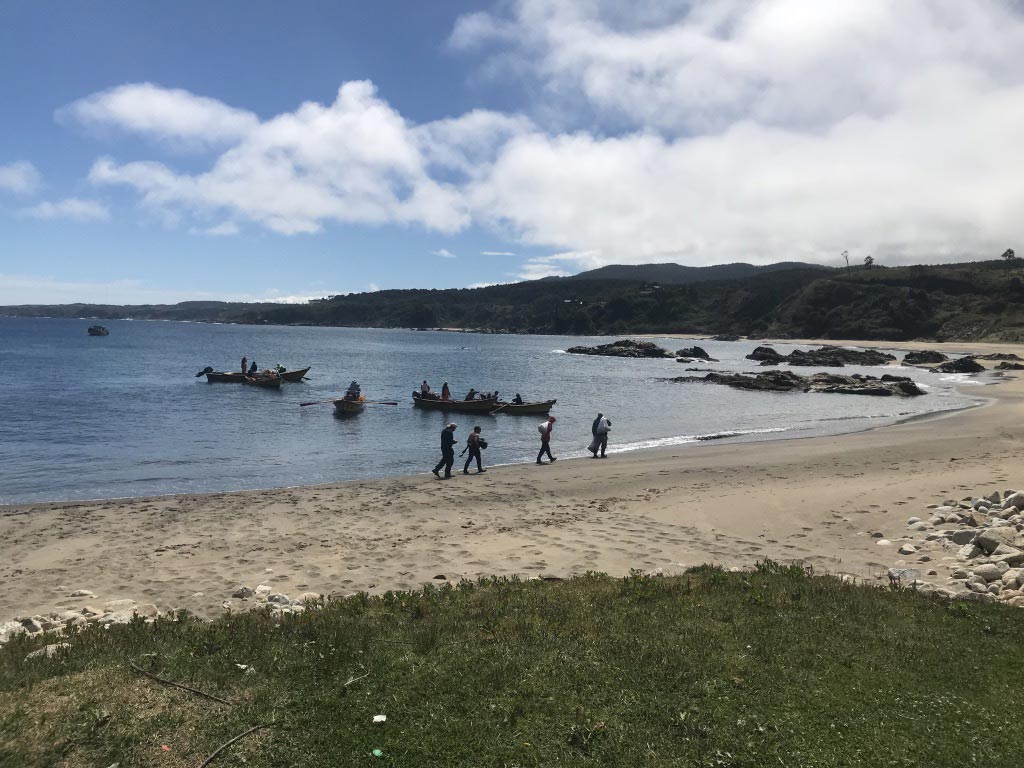“Love is a force that protects those who live, and we must make our salty and collective refuge appear so that it can be loved in its vital and healing existence. Here we are taking refuge in this aqueous universe, collaborating in its care and finding our processes in a cyclical way”
Extract from R E F U G I O, by Paula Letelier
The clock reads 9:30 a.m. It is a cold morning, but the sun slowly begins to peek behind the green hills that seem to turn Zapallar into a natural amphitheater. Down on the beach, dozens of women begin to gather. They have come from different places and from 15 open water swimming groups from the Valparaíso region. From Viña del Mar and Las Cruces. From Papudo and Zapallar. From Maitencillo and Concón. In part, they have all arrived here with the same purpose: to meet (and perhaps also to meet again) in and with the sea, in the waters of the Zapallar TURF-Reserve.
There are almost 130 women now treading the sands. Together they form a large circle, and in the center they display a collaboratively made canvas that reads R E F U G I O (Reserve). There is only one man in the scene: Sergio Veas. As host, the president of the Zapallar Artisanal Fishers Union is there to tell the story behind the Zapallar TURF-Reserve inaugurated at the end of 2021, why it is important to take care of it and the value of an activity like this, which celebrates the conservation of this collective space.
After the reading of a careful text written and narrated by Paula Letelier, and after a brief safety talk, the women began to walk steadily, with overflowing happiness, towards the dock, as if in a procession. There, one by one they enter the water. The sea embraces them, even if at times the waters seem a bit rough. Sometimes it is difficult to coordinate the crowd, but even so it is possible to capture the moment, and the canvas that says R E F U G I O (refuge or reserve) extends over the waters of the TURF-Reserve.
Then comes the time for play. To swim, to kick, to laugh and maybe even to cry. Life itself seems to be contained in just a few brief minutes. A little later, back on land and in dry clothes, the women gather in the warmth of conversation, sharing a breakfast-lunch under a sun that shelters their hearts.
A little bit of history
The origin of this activity dates back to about a year ago, when Peruvian photographer Ana Elisa Sotelo convened various women’s swimming groups in Chile to make a photographic record. “That was a push to continue doing these kinds of initiatives, because we realized that it was a space that we needed as women. To feel that we were in a safe space in the water, to contain and support ourselves”, says Javiera Espinoza, a member of Las Chungungas swimming group. “There are many women interested in participating. They feel that it is a space they need and where they can somehow heal from their own processes, where they can take care of themselves”, she adds.
“The sea belongs to everyone, and the ocean in turn is generous: it provides products, regulates the environment, sustains life on Earth… But one of the great gifts that the sea gives us is to provide recreational spaces where human beings can develop and meet, places where we build culture. In activities of this type this becomes evident, the sea is a space where we can share in community”, complements Catalina Mekis.
This was the second time that a canvas with a message was taken. The first was for 8M (the March 8th Commemoration for women’s rights and equality). On this occasion, each letter was made with scraps of cloth by the different open water swimming groups that participated in the activity. “The concept used encompasses three dimensions that are related: it has to do with the TURF-Reserve; with the sea as a refuge for us; and the refuge that we build among ourselves as well, because we all take care of each other, and so each group creates a refuge”, explains Paula Letelier.
“These transformative experiences create moments of gratitude, and there is also a coexistence with that habitat. After these experiences all you want to do is take care of it and cohabit in a more harmonious way”, adds Javiera Espinoza.
In this way, the TURF-Reserve established by the Zapallar Fishers Union in alliance with the Capital Azul Foundation continues to open up to the community, encouraging a reconnection with these spaces from other points of view and perspectives, and strengthening the social fabric. This level of involvement of the community, of diverse actors and co-inhabitants, promotes not only the conservation and restoration of the ocean, but also of each of the parts that make up the marine-coastal ecosystem.
This was, in part, what motivated Carmen Gloria Andrade to participate in the organization of this event: to unite the community around sports and the sea. A resident of Papudo, last year she formed the group Nademos Juntos (Let’s Swim Together) after noticing that there were many people who swam alone, and even some who had stopped going into the water for fear of swimming alone.
In a way, today, this collective has also become a small community around open water swimming, bringing together children and people up to 70 years of age. Whether it’s swimming, floating, diving or training for competitive purposes, it’s enough to bring two people together to make Nademos Juntos a reality. Carmen Gloria dreams of replicating this type of activity around the TURF-Reserve with greater force and thus moving towards a new ocean culture.
“I think it is important that the community, at least in the coastal areas, the coastal towns, are aware of the TURF-Reserves, not just the fishers. Everyone knew that we were there that day because of the TURF-Reserve,” she says, emphasizing the importance of uniting and intertwining different communities and groups, including those who practice SUP, kayaking and freediving. In the end, she says, “it is to generate marine communities, aquatic communities. It is to generate a culture of the sea”.
Some of the female open water swimming groups that organized and participated in this activity:
@las_chungungas
@chungungasmaiten
@nademos_juntos
@mujeresquenadanconlobos
@kaipacific.concon
@cardumen_conchitas_concon
Tummo Lafken
Club Aguas Abiertas Concón
@abarquinasmarinas
@eskualo_travesia

